Two years have passed since the last update of my great Apple apps for event professionals. Apps continue to be born, evolve, and, sometimes, die—so it’s time for my latest list of event professionals’ great apps!
I’m still using the original Tumi Alpha “everything bag” (sadly, discontinued) I gushed over in my 2013 app update to transport an iPhone 6S (Verizon) and iPad 3 (AT&T), and I’m currently coveting an iPad Pro and an Apple Watch.
Rather than listing additions and removals from my three previous favorite app posts, I’m presenting a complete alphabetized current list, including updated descriptions that incorporate any notable new features I use. An [!] next to an app indicates it’s stood the test of time, while an [N] means it’s a new addition since my 2015 update.
Apple Maps and Google Maps, [N] free
Although I still prefer Waze (see below) for directions when driving, I need something different when I want to walk somewhere unfamiliar. I’d love to pick just one of these apps to use consistently but it’s not that simple, because every once in a while they either draw a blank on the destination I’ve entered or provide a ridiculous route to get there. And, of course, both apps are being updated all the time, so any preference noted here could vanish or reverse in the future. Currently, my first choice is Google Maps, but I keep Apple Maps close at hand in case Google proves inadequate.
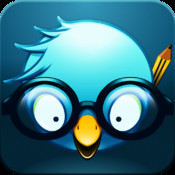
If you are active on Twitter (and I’d argue that most event planners should be) Birdbrain is a fantastic way to manage your Twitter network. The app provides an excellent overview and management of your followers and those you follow. Birdbrain handles multiple accounts, makes it easy to investigate anyone on Twitter, allows you to track unfollows as they occur, list people you’re following who don’t follow you, display mentions and retweets, and provides informative statistics showing changes in your Twitter stats over time. The only feature I’d like to see added is the ability to show inactive accounts you’re following. Recommended!
Dropbox, [!] free for 2 GB, Dropbox Plus $9.99/month or $99/year
I’ve been using Dropbox for years on my office Macs, iPad and iPhone.
Dropbox keeps your files safe, synced, and easy to share between multiple computers and devices. All contents of the Dropbox folder on all linked devices (Macintosh, Linux, Windows, IOS, and Android) running Dropbox are automatically synced when new files or changes are detected. You don’t have to be continually online; all changes sync once your computer has an Internet connection again. You can create shared folders, allowing several people to collaborate on a set of files.
The free service gives you 2GB of space on Dropbox’s servers, which was plenty for me for many years (and Dropbox offers ways to increase the free limit) but a few years ago I upgraded to Dropbox Plus (formerly Pro). A nice Plus feature is that the server stores the last 30 days of versions of your files, so you can revert to an older version if needed. This upgrade includes 1TB of storage plus unlimited older versions of your files, remote wipe, read-only shared folders, offline mobile access, automatic camera photo upload (love this feature), and password protected shared links. It’s worth every penny to me.
The Dropbox app allows you to access your Dropbox files on your iPhone or iPad. Image, music, movie, Word, PowerPoint, Excel, PDF, Keynote, Pages, Numbers, HTML, and text file formats can be displayed by the app. Unlike the desktop versions of Dropbox, files are not stored automatically on a mobile device but are uploaded on request by marking them as Favorites.
Dropbox also includes a web interface to your files, so you can access them (and older versions) from any Internet connected computer.
While writing my books, I store all my important files on Dropbox. It gives me great peace of mind to know that up-to-date versions of my book’s many files are being automatically saved remotely and on all my office computers.
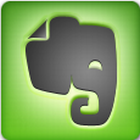
Evernote is my go-to application for capturing information I want to be able to find in the future. I use it mainly for web pages, but it will file text notes, pdfs, spreadsheets, photos, voice memos, and screenshots too. Evernote clients are available for most mobile and desktop operating systems. Everything captured is made searchable—you can add your own tags if you like—and can be stored in specific categories (“notebooks”) if desired. The iPad version takes full advantage of the large screen. Your notes are stored on Evernote’s servers and locally and are synced to your mobile device and to Mac OS X and Windows computers running an Evernote client.
Evernote supplies web clipping functionality for all major desktop and mobile browsers, so, with a few clicks, it’s easy to safely capture that article you think could be really useful one day.
You can upload up to 60MB per month (with a maximum single note size of 25MB) using the free Evernote service, and this has always been adequate for me. However, in 2016 Evernote restricted the free version to a maximum of two synced devices, so I reluctantly upgraded to the Plus version, which has no such restriction. Plus raises the upload maximum to 1GB/month with a maximum single note size of 50MB, and a Premium subscription allows 10GB/month with a maximum single note size of 200MB. Plus and Premium include some additional benefits, none of which I’ve found to be especially useful. Nevertheless, Evernote’s ability to provide a safe place for anything I want to capture makes it a must-have for the way I work and live.
Feedly, [N] free
Today, you are drowning in information. To survive, you must pick a limited selection from the myriads of sources competing for your attention, and then use tools to review the resulting stream of articles, posts, pictures, and videos. Most websites provide an RSS feed, which provides updates to online content in a standard, computer-readable format. Tools that aggregate and manage multiple RSS feeds are known as RSS readers, and the RSS app I use on IOS is Feedly.
Though not perfect, Feedly provides a well-designed interface for browsing and drilling down into your RSS feeds. Feedly keeps track of what you’ve read and new items automatically, synced across all its platforms, so it’s always up to date whether I use it on my iPhone, iPad, or the web.
GateGuru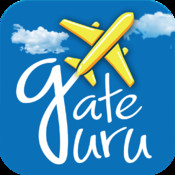
GateGuru is an airport information app that was purchased by TripAdvisor in June 2013. While it attempts to replicate some of Tripit‘s functionality, I use it to scope out the places to eat (aka amenities) at airports. The traveler’s reviews, while sometimes spotty, usually allow you to pick out the best place to satisfy your current gustatory desires, and I’ve occasionally found a real gem tucked away on Concourse C that I’d otherwise have missed.
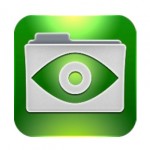
GoodReader is an inexpensive app that allows you to transfer files to your mobile device, by Wi-Fi or from an Internet cloud server, and reliably view them. Like the Dropbox viewer, it supports a huge range of file formats. Unlike other mobile file readers, GoodReader has no problem rapidly opening, displaying, and responsively scrolling through the 350-page ebook version of Conferences That Work and other large files I’ve thrown at it.
GoodReader syncs beautifully with Dropbox, allowing me to work on files on any computing device and then upload them to a GoodReader folder for convenient viewing. When I’m facilitating or presenting at an event, I’ll typically use GoodReader to display all relevant files in a multi-tabbed app window, allowing me to quickly refer to them when needed. There’s a nice auto sync feature which, though a little fiddly to set up, allows me to easily sync last-minute changes made on my Macintosh to my iPad before I go on stage.

Although I finally switched to a phone plan that includes unlimited texts (yes I’m a cheapskate) I still like using Messages, even if it isn’t saving me money anymore. If someone has an iDevice, I can message them and reliably discover whether my message/photo/movie was actually delivered or not. (If Messages could tell me the recipient saw my message, that would be even better, but I guess we’ll have to wait until brain monitor functionality is built into IOS 42.) Works well for me. I’ve heard there can be glitches if you abandon your iDevice and go over to The Dark Android Side, but you’d never do that would you? Would you?

OpenTable allows you to make free reservations at over 40,000 restaurants in more than 20 countries, including the United States, Canada, Germany, Japan, Mexico, United Kingdom, Ireland, and Australia. No more phone calls to a restaurant only to get an answering machine, having to leave a message, and wondering whether you’ll get the reservation you wanted or not. The app works quickly and many reservations give you OpenTable points which can eventually (you’d have to use it a lot) be redeemed for a discount off your meal.

I’ve written in detail about this little gem here. Suffice it to say that if you do any kind of group work with sticky notes, this is a great tool for capturing, organizing, and sharing multitudes of these colorful little rectangles. Since I wrote the linked review, 3M continues to add new features: you can now edit notes and add additional digital notes to existing boards.
Point of Sale, [!, formerly Square, then Register] app free, card transaction fees extra
Square’s Register app provides a neat inexpensive way to easily accept card payments. You can create lists of the items or services you sell. It took me just a few minutes to set up Register for selling my first book three ways—paperback, ebook, or combo—at presentations and trade shows. You can create special discount codes too. When you sign up for the service, Square sends you a free swipe card reader that plugs into your iPad or iPhone. They also have a $49 contactless (NFC) and chip card reader that satisfies the EMV chip credit card merchant obligations that are now in force in the U.S. You can process cash sales and send receipts to a buyer’s email address. Square provides a complete downloadable record of all your sales.
Square charges reasonable card fees: 2.75% for a swiped card and 3.5% + $0.15 for a keyed-in card. These are the only charges for the service; there’s no monthly fee or minimum and no contract or merchant account required. This is a great app for selling promotional items at events.
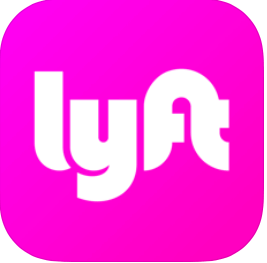
Ride-hailing apps: Uber, Lyft, Fasten, [N] free
Reluctantly, I no longer take cabs unless there’s no alternative option (typically when leaving an airport where other ride-hailing services have been shut out). With rare exceptions, I’ve found cabs to be dirtier, more expensive, unreliable to summon (even with cab apps like Flywheel) and with indifferent drivers.
Whenever I take a ride, I ask the driver their opinion on driving for the service I’m using and its rivals. Uber is the market leader (~600 cities worldwide) and the only option besides cabs in many places, but I have received significant negative feedback about how the company treats its drivers. In contrast, drivers (most of whom have worked for Uber) for Fasten and Lyft have spoken largely positively about these services, so I recommend trying out alternative ride hailing apps when possible. Unfortunately Fasten is currently only serving Boston and Austin. (I hope to try out nonprofit RideAustin when I’m next there.)
Though I have concerns about the rise of “self-employed” contractor drivers and what will happen if one of the competing companies achieves a lock on the ride-hailing market, the vast majority of drivers have told me that they are pleased to have the opportunity of making money by driving, with the flexible choice of work hours as the biggest draw. I’ve met many interesting drivers since I took my first ride in 2014, and expect to continue to meet more.
Swarm
Foursquare, started as a game (be the mayor of places, win badges, and have more points than your friends) and a way to see where your friends are and what they’re doing. I live mostly in a rural area and, while I have occasionally discovered and met up with friends I didn’t know were near me, my main use of this service is to store a searchable history of where I’ve been. When did I drop off that luggage to be repaired? What was the name of that great place I ate dinner with Susie in Atlanta? When exactly was I in Anguilla in 2009? Foursquare’s history of my check-ins is often useful in unexpected ways.
In 2014, Foursquare tried to reposition their app by splitting it into two: Foursquare, a Yelp look-alike competitor, and Swarm, which would remain the “check-in” app. The move did not go well, especially after Foursquare removed the mayor feature in Swarm, which took out some of the fun of checking-in. The company’s missteps cost it popularity—a lot less people seem to be checking in recently. Recently, they added back mayorships. Yes, I admit it, it’s fun to triumphantly win back the mayorship of my favorite local restaurant once in a while, but the history feature is the main reason I use Swarm these days.
Trello, [N] free
This blog post explains the reasons that Trello has become (and has remained for 3 years now!) my favorite To Do list manager. The TLDR version: utterly reliable, clients for all platforms, great interface, supremely flexible. I don’t see the value of the Gold subscription, but there is a paid team Trello version that could be very useful if you need it.
TripIt, [N] free, TripIt Pro $49/year
OMG: Since I started using TripIt in 2013, the app tells me I’ve traveled 271K miles! [And that’s just the trips I’ve entered into it.] If you’re an event professional you probably travel a lot, and TripIt is just what you need to track everything about your travel in one place. I love how, after receiving an email about some aspect of my travel I simply forward it to plans@tripit.com, and 9 times out of 10 TripIt cleverly extracts all the booking information from the email and adds it to the appropriate trip. When I’m on the road, TripIt provides a clear view of every aspect of my schedule: flights, lodging, car rental, restaurant reservations, meetings, etc. TripIt Pro is a subscription service that adds point tracking and real-time flight alerts, but I haven’t found a compelling reason to pay for these features (I use the excellent AwardWallet for the former and free airline notifications for the latter).
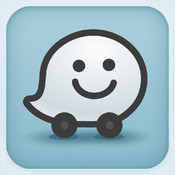
Waze is my favorite traffic and navigation app of the many that I’ve tried (though some Uber drivers have told me that Google Maps now has more helpful junction navigation in big cities). Unlike traditional GPS units with traffic updates that are often found to be woefully out of date, Waze uses information from its own users to detect traffic snarls and reroutes you on the fly when necessary to avoid that accident that happened up ahead five minutes ago or the rush hour traffic jam building up on the interstate you normally drive on to get home. Its estimates of arrival time, even on long trips, are astonishingly accurate. Owned by Google, my only concern is that the company will start using my location in nefarious ways. If I start seeing too many annoying ads promoting the tattoo parlor I’m passing by I’ll reconsider. Until then, this is an amazing app that has saved me hours of driving and frustration, and shown me countless new neighborhoods as I bypass traffic where other drivers sit fuming.
WhatsApp, [N] free
With over a billion users each, WhatsApp and Facebook Messenger are the world’s most popular free messaging & voice/video calling applications. WhatsApp uses end-to-end encryption (optional in Messenger) and appears to handle voice calls better on spotty connections. I prefer the streamlined interface of WhatsApp to the ever-increasing bloatedness of Messenger, as Facebook stuffs in more features. (On the other hand, Facebook owns both applications, so who knows what may happen.) Outside the U.S., WhatsApp seems to be a more popular choice, though that’s just my experience and may not be true in general.
For event professionals, WhatsApp’s biggest value is probably group chat. It’s easy to set up private groups for specific purposes, allowing quick communication during a high-speed event.
One big advantage of Messenger is that you can message anyone who has downloaded the app (they don’t have to be a Facebook friend) while WhatsApp is restricted to people in your phone’s contacts. Though sometimes that seems like a disadvantage.
On balance, I prefer messaging with WhatsApp, though my choice often comes down to the service used by the person with whom I’m trying to communicate.

Goodbye Weatherbug Elite, Yahoo Weather (still think of you fondly, loved your simplicity), and all the other weather apps I’ve dated the last few years. I’m going steady with Wunderground now. Darling W (yes, we’re on first initial terms), your gorgeous graph interface makes it easy to get a quick big picture of the next ten days, your hour by hour forecasts are so handy for deciding whether to move the social indoors, and your weather map predictions load so fast. I’d be a fool to look at anyone else. Sure, W, I admit to a fickle past with weather apps, but now I’m seriously thinking about settling down for good. With you, always by my side…So, what’s it going to be like in Austin next week?
Yelp, [N] free
We all gotta eat. And I’m still surprised by how many people away from home don’t use an app like Yelp to figure out good places to eat. Where you get to define what “good” means. Everyone loves to complain about restaurant reviews, but I’ve found Yelp to be very useful and generally trustworthy as long as there are more than a few reviews for a place you’re considering. If you’re skeptical, download the app and compare the reviews of places you know, to see how well what’s said matches up with your own experience.
There’s nothing like being in an unfamiliar city and discovering a superb/unique dining experience you’d never have found by wandering around. Yelp makes that a little more likely. I don’t leave home without it.
So event professionals, what have I missed? Do you have a favorite app I haven’t mentioned here? Let the world know in the comments!




For an in-depth analysis of the Google/Apple map war mentioned above, check out this fascinating article from Justin O’Berne!
https://www.justinobeirne.com/a-year-of-google-maps-and-apple-maps